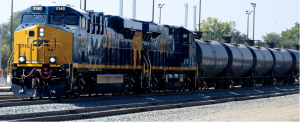What is Part 243 Railroad Employee Training, Qualification, and Oversight for Safety Requirements?
- By -
- Latest News, Railroad
- §243.101 Railroad Employer Program Requirements, §243.103 Railroad Employee Training Components, and Oversight for Safety Requirements?, New Railroad Employer Program Requirements, New Railroad Employer Training Program Requirements, Qualification, What is Part 243 Railroad Employee Training
What is Part 243 Railroad Employee Training, Qualification,
and Oversight for Safety Requirements?
Title 49: Transportation
PART 243—TRAINING, QUALIFICATION, AND OVERSIGHT FOR SAFETY-RELATED RAILROAD EMPLOYEES
Subpart A—General
§243.1 Purpose and scope.
(a) The purpose of this part is to ensure that any person employed by a railroad or a contractor of a railroad as a safety-related railroad employee is trained and qualified to comply with any relevant Federal railroad safety laws, regulations, and orders, as well as any relevant railroad rules and procedures promulgated to implement those Federal railroad safety laws, regulations, and orders.
(b) This part contains the general minimum training and qualification requirements for each category and subcategory of safety-related railroad employee, regardless of whether the employee is employed by a railroad or a contractor of a railroad. Contractors shall coordinate with railroads and comply with the contents of this part, including those aspects of training that are specific to the contracting railroad’s rules and procedures.
(c) The requirements in this part do not exempt any other requirement in this chapter.
(d) Unless otherwise noted, this part augments other training and qualification requirements contained in this chapter.
(e) The requirements in this part do not address hazardous materials training of “hazmat employees” as defined in 49 CFR 171.8 as such training is required pursuant to 49 CFR part 172, subpart H
 §243.101 New Railroad Employer Training Program Requirements
§243.101 New Railroad Employer Training Program Requirements
(a)(1) Effective January 1, 2018, each employer conducting operations subject to this part with 400,000 total employee work hours annually or more shall submit, adopt, and comply with a training program for its safety-related railroad employees.
(2) Effective January 1, 2019 or four years from the date of issuance of FRA’s Interim Final Compliance Guide, whichever is later, each employer conducting operations subject to this part with less than 400,000 total employee work hours annually shall submit, adopt, and comply with a training program for its safety-related railroad employees.
(b) Except for an employer subject to the requirement in paragraph (a)(2) of this section, an employer commencing operations subject to this part after January 1, 2018 shall submit a training program for its safety-related railroad employees prior to commencing operations. Upon commencing operations, the employer shall adopt and comply with the training program.
(c) In the program required by this part, the employer shall:
(1) Classify its safety-related railroad employees in occupational categories or subcategories by craft, class, task, or other suitable terminology;
(2) Define the occupational categories or subcategories of safety-related railroad employees. The definition of each category or subcategory shall include a list of the Federal railroad safety laws, regulations, and orders that the employee is required to comply with, based on the employee’s assignments and duties, broken down at a minimum to the applicable part of the Code of Federal Regulations, section of the United States Code, or citation to an order. The listing of the Federal requirements shall contain the descriptive title of each law, regulation, or order;
(3) Create tables or utilize other suitable formats which summarize the information required in paragraphs (c)(1) and (2) of this section, segregated by major railroad departments (e.g., Operations, Maintenance of Way, Maintenance of Equipment, Signal and Communications). After listing the major departments, the tables or other formats should list the categories and subcategories of safety-related railroad employees within those departments;
(4) Develop procedures to design and develop key learning points for any task-based or knowledge-based training; and
(5) Determine how training shall be structured, developed, and delivered, including an appropriate combination of classroom, simulator, computer-based, correspondence, OJT, or other formal training. The curriculum shall be designed to impart knowledge of, and ability to comply with applicable Federal railroad safety laws, regulations, and orders, as well as any relevant railroad rules and procedures promulgated to implement those applicable Federal railroad safety laws, regulations, and orders.
(d) On-the-job (OJT) training requirements:
(1) If a training program has OJT, the OJT portion of the training program shall consist of the following three key components:
(i) A brief statement describing the tasks and related steps the employee learning the job shall be able to perform;
(ii) A statement of the conditions (prerequisites, tools, equipment, documentation, briefings, demonstrations, and practice) necessary for learning transfer; and
(iii) A statement of the standards by which proficiency is measured through a combination of task/step accuracy, completeness, and repetition.
(2) Prior to beginning the initial safety-related tasks associated with OJT exercises, employers shall make any relevant information or materials, such as operating rules, safety rules, or other rules available to employees involved for referencing.
(3) The tasks and related steps associated with OJT exercises for a particular category or subcategory of employee shall be maintained together in one manual, checklist, or similar document. This reference shall be made available to all employees involved in those OJT exercises.
(e) Contractor’s responsibility to validate approved program to a railroad: A contractor that chooses to train its own safety-related railroad employees shall provide each railroad that utilizes it with a document indicating that the contractor’s program of training was approved by FRA. A contractor is being utilized by a railroad when any of the contractor’s employees conduct safety-related duties on behalf of the railroad and the railroad does not otherwise qualify those employees of the contractor that are allowed to perform those duties.
(f) Railroad’s responsibility to retain contractor’s validation of program: A railroad that chooses to utilize contractor employees to perform safety-related duties and relies on contractor-provided training as the basis for those employees’ qualification to perform those duties shall retain a document from the contractor indicating that the contractor’s program was approved by FRA. A copy of the document required in paragraph (e) of this section satisfies this requirement.
§243.103 Railroad Employee Training Components
(a) Each employer’s program shall include the following components:
(1) A unique name and identifier for each formal course of study;
(2) A course outline for each course that includes the following:
(i) Any prerequisites to course attendance;
(ii) A brief description of the course, including the terminal learning objectives;
(iii) A brief description of the target audience, e.g., a list of the occupational categories and subcategories of employees the course will be delivered to;
(iv) The method(s) of course delivery, which may include, but are not limited to, classroom, computer-based, on-the-job, simulator, laboratory, correspondence courses, or any combination thereof;
(v) The anticipated course duration;
(vi) A syllabus of the course to include any applicable U.S.C. chapters, 49 CFR parts, or FRA orders covered in the training; and
(vii) The kind of assessment (written test, performance test, verbal test, OJT standard, etc.) performed to demonstrate employee competency.
(3) A document for each OJT program component that includes the following:
(i) The roles and responsibilities of each category of person involved in the administration and implementation, guidelines for program coordination, and the progression and application of the OJT;
(ii) A listing of the occupational categories and subcategories of employees for which the OJT program applies; and
(iii) Details of the safety-related tasks and subtasks, conditions, and standards covered by the program components.
(4) The job title and telephone number of the employer’s primary training point(s) of contact, listed separately by major department or employee occupational category, if applicable.
(5) If any training organization or learning institution developed and will deliver all or any part of the training, the employer must include the following:
(i) A narrative, text table, or other suitable format which describes those portions of the training that fit into this category;
(ii) The business name of the organization that developed and will deliver the training; and
(iii) The job title and telephone number of the training organization or learning institution’s primary training point of contact.
(b) An employer that is required to submit similar training programs or plans pursuant to other regulatory requirements contained elsewhere in this chapter may elect to cross-reference these other programs or plans in the program required by this part rather than resubmitting that similar program or plan. When any such similar program or plan did not include the OJT components specified in paragraph (a)(3) of this section, the employer shall supplement its program in accordance with this part by providing that additional information.
(c) If an employer arranges job-related practice and practice related feedback sessions to supplement classroom, laboratory, simulator training, or OJT, the program shall include a description of the supplemental training.
(d) FRA may require modifications to any programs, including those programs referenced in paragraph (b) of this section, if it determines essential program components, such as OJT, or arranged practice and feedback, are missing or inadequate.
Sources Cited: http://www.ecfr.gov/ Feature Photo of Network Rail employee by Andrew Butler.















